What Is Product Discovery? The Ultimate Guide Step-by-Step
Product Discovery frameworks and templates. Why Product Discovery matters, how to do it right, who's responsible. Four stages of Continuous Product Discovery.
Product Discovery is by far the most critical area for a Product Manager.
But, it is largely misunderstood. Teams waste time and energy delivering ideas that fail to drive the outcomes they expect.
If you’ve ever built something nobody used, you already know why Product Discovery matters.
In this Product Discovery 101 guide, you’ll learn:
What Product Discovery is
Why Product Discovery is important
The difference between Continuous and Initial Product Discovery
How to apply Product Discovery: techniques, frameworks, and tools
Pros and cons of Jira Product Discovery
Where to find Product Discovery courses, templates, and resources
1. Why do We Need Product Discovery?
1.1 Managing risks
Let me tell you a secret: In product management, most ideas won’t work as expected. As Marty Cagan says in Inspired:
„The first truth is that at least half of your ideas are just not going to work”
Good teams assume at least three-quarters of their ideas won’t perform as they hope.
But why does it happen?
Product management is, at its heart, about managing risk. And for every product, 5 essential risks can materialize:
Value Risk: Will this idea truly create value for customers?
Usability Risk: Will users figure out how to use it?
Viability Risk: Can our business support it?
Feasibility Risk: Can we build it with our current technology?
Ethical Risk: Should we build it at all? Are there ethical considerations?
By exploring these questions early, you’ll avoid committing to dead-end ideas.
Tip: While those risks are the most common, you might benefit from the extended risks classification and how to manage risks as a Product Manager, especially for a new product
1.2 Learning by delivering
Many teams adopt Agile frameworks to deliver software iteratively and adapt quickly.
For example, in Scrum, we have a Sprint Review. During this workshop, we discuss the progress with the stakeholders and decide how to adapt:
But what will happen if we throw random ideas into the Product Backlog?
Some might work, but most won’t. This is "learning by delivering." Unfortunately, this approach results in waste and rework.
Some might say it’s not a problem, as the Sprint is often 1-2 weeks long.
But this will happen every Sprint. Every Sprint, the product team selects ideas, implements them, and delivers a production-ready increment to discover those were not good ideas.
And the best ideas might not even be on the list.
So, we’d like to understand:
How can we come up with better ideas?
How can we test those ideas before the implementation?
And the answer is Product Discovery.
2. What is Continuous Product Discovery?
Continuous Product Discovery is a special type of Product Discovery for an existing product. It’s all about regularly exploring opportunities and identifying and testing your assumptions.
Instead of a single, upfront research phase, you keep the discovery going in parallel with delivery.
2.1 Continuous Discovery and Continuous Delivery
You might have heard about Dual-Track Development or Dual-Track Agile. It simply means having two streams running in parallel:
Continuous Discovery: Discover and validate what product to build.
Continuous Delivery: Implement and deliver the validated product to the market.
What's important here is that this is not a waterfall. Some team members talk to the customers, explore people's problems, brainstorm solutions, identify assumptions, and perform experiments. At the same time, the team implements and delivers validated ideas to the market.
By testing ideas early, you dramatically reduce waste and rework. Product Discovery results in a validated Product Backlog. In particular, high-risk assumptions are tested upfront.
2.2 The Product Trio
There is a common misconception. Some say that the Product Manager decides what to build, and Engineers and designers should focus on how to build it.
Have you heard that before?
It hurts my ears because Product Discovery is not a task for a single person. I deeply believe that instead of building those silos and stage gates, we should embrace a collaborative approach.
In Continuous Discovery Habits, Teresa Torres introduced the concept of a Product Trio: Product Manager, Product Designer, and Engineer working together. This will help you build a shared understanding and stay open to different perspectives.
In particular, I have repeatedly found that the best ideas often come from my engineers. They know what’s technically possible.
Tip: Please remember that the Product Trio is not a rigid framework. It’s the default recommendation that can expand and contract. For example, you might include a Product Marketing Manager or exclude a Product Designer for an API product.
2.3 Inside Continuous Product Discovery
Think of Continuous Product Discovery as a series of iterative cycles, often visualized with the Double Diamond model:
Tip: Critically, Product Discovery is not a linear process. For example, you can loop back at any time if an experiment fails or you need more research.
The Left Diamond
Here, we explore the problem space to understand and define opportunities (problems, needs, desires) that, when solved, will drive the desired outcomes.
The two stages of divergent and convergent thinking:
Stage 1: Explore
Performing customer interviews (e.g., weekly)
Interviewing stakeholders
Learning from usage analytics (collecting and analyzing data on how users interact with a product or service, e.g., Pendo.io)
Exploring data analytics (analyzing large datasets to uncover trends, patterns, and relationships, e.g., Microsoft Power BI)
Leveraging other sources of insights in Product Discovery: surveys, market trends, SEO, and SEM reporting
Stage 2: Define
Mapping opportunities (e.g., Opportunity Solution Tree by Teresa Torres)
Prioritizing opportunities (e.g., Opportunity Score by Dan Olsen, ICE score)
The Right Diamond
Here, we explore the solution space to identify the right ideas to build.
The two stages of divergent and convergent thinking:
Stage 3: Ideate
Brainstorming solutions to identified opportunities
Formulating testable assumptions related to those ideas
Stage 4: Test
Continuous Product Discovery Example
In this example, we started with the desired outcome of increasing customer engagement for a video streaming platform by 20%. The team decided to map their steps with the Opportunity Solution Tree.
Stage 1, Stage 2: Explore and Define
After interviewing customers, analyzing product analytics, and talking to support and customer success, the Product Trio identified opportunities and child opportunities related to the desired outcome, e.g.:
I can’t find anything to watch,
I can’t figure out how to search for a specific show).
Next, they prioritized opportunities that are important for the users, where their satisfaction with their ability to achieve a specific outcome was low.
Stage 3: Ideate
After prioritizing opportunities, everyone on the Product Trio brainstormed individually. The team members met to discuss their ideas.
They immediately rejected a few ideas for one of the opportunities (“I can’t figure out how to search for a specific show”). The two most promising ideas left were:
Displaying a search box,
Displaying recommended shows.
Stage 4: Test
The team used User Story Mapping to identify assumptions related to value, usability, and feasibility. They identified some as risky and planned experiments to test those assumptions.
For example, they created a user prototype in Figma to test whether users understand how a search box works. They gave selected users a task to accomplish, tracked every user's click, and assumed the assumption was correct if at least 70% of the users would complete their task on the first attempt.
The test was successful, so there was no need to consider alternative solutions or talk to the users again.
Previously, the Product Manager ensured with the stakeholders the the solution would also work for the business (she talked to CSM, Marketing, and Sales).
A few days later, the engineers selected this idea for implementation.
3. What is Initial Product Discovery?
Initial Product Discovery comes into play when creating a new product.
In this phase, you define your Product Vision, draft a Business Model, and identify the right market. You’re not worrying yet about continuous iteration.
You’re trying to figure out if there’s a market at all.
Initial Product Discovery follows a very similar workflow with different activities possible in each stage:
Again, there is no “Product Discovery Process,” but rather a series of iterative cycles.
4. Jira Product Discovery: Pros & Cons
If you work with Jira, you might have heard about Jira Product Discovery. It offers some handy features like a Now-Next-Later roadmap, which is a perfect choice for visualizing big-picture plans:
But JIRA Product Discovery misses the critical aspects of Continuous Product Discovery and encourages some bad practices:
No built-in way to map opportunities
No straightforward way to plan experiments
Some try to hack it, but I have a strong opinion: it’s not a Continuous Product Discovery tool. You will do much better creating the Opportunity Solution Tree in tools like Miro, Notion, or FigJam.
5. Product Discovery Tools, Techniques, and Frameworks
You don’t have to start Product Discovery from scratch. Below are some posts and templates that can help.
Recommended free Product Discovery templates:
Opportunity Solution Tree (Miro)
Recommended posts to dive deeper:
Assumption Prioritization Canvas: How to Identify And Test The Right Assumptions
Jobs-to-be-Done Masterclass with Tony Ulwick and Sabeen Sattar
12 Proven Sources of Insights to Fuel Your Product Discovery
6. Continuous Product Discovery Masterclass Course
Product Discovery is the most important area for a Product Manager. My premium subscribers can enroll in the Continuous Product Discovery Masterclass Course for free.
This video course will allow you to:
Quickly discover and test the best product ideas step-by-step.
Apply best practices, like prioritizing opportunities, and avoid common mistakes.
Combine the top product discovery techniques: Opportunity Solution Tree, Opportunity Score, and Strategyzer cards.
Access dedicated tools and Notion template to implement Continuous Product Discovery in your organization.
Demonstrate your skills with digital, verifiable credentials once you pass the exam.
For more details, check out the Continuous Product Discovery Masterclass Course
Recommended Books on Product Discovery
The two most important titles every product person should read:
Inspired by Marty Cagan
Continuous Discovery Habits by Teresa Torres
For more suggestions, check out 15 Best Product Management Books in 2025.
BONUS: Product Discovery Cheat Sheet PDF
BONUS: Product Discovery Cheat Sheet Video
Final Thoughts
Product Discovery doesn’t have to be complicated. The key is to stay curious about your users, test ideas early, and collaborate with your team to build solutions people actually want.
Thanks for reading The Product Compass!
Enjoy this?
Consider subscribing and upgrading your account for the full experience:
Take care, Paweł

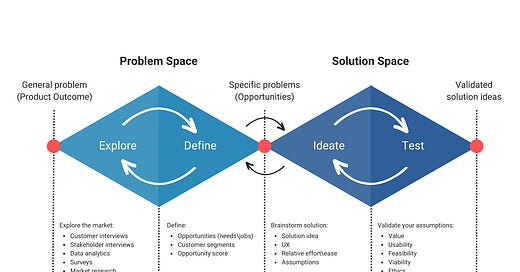


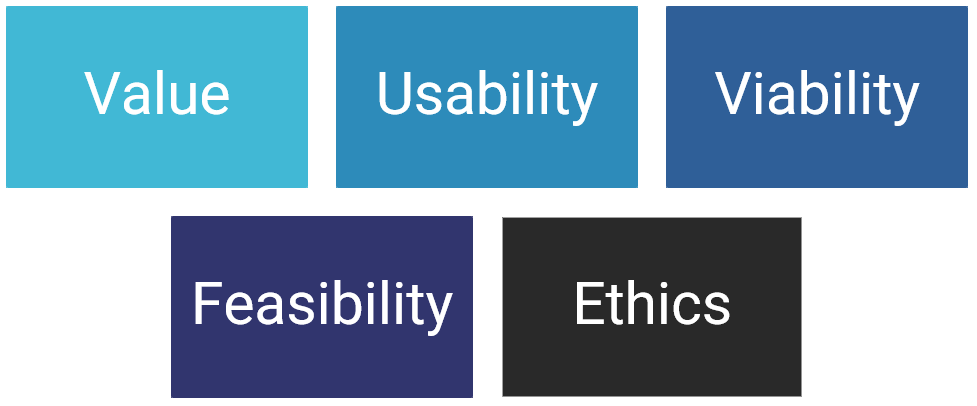

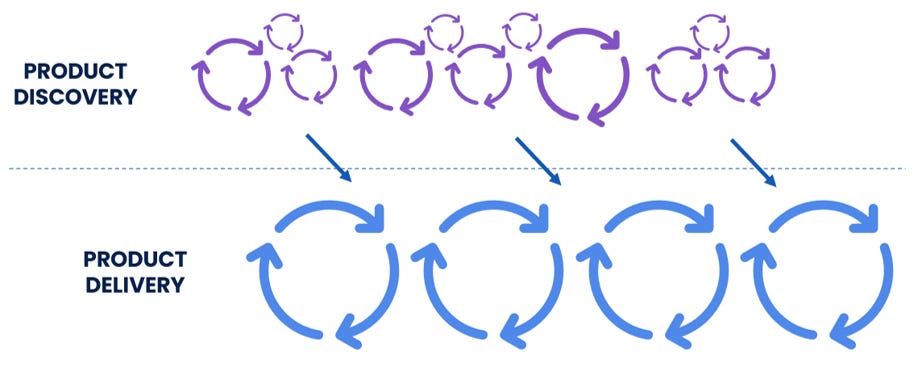
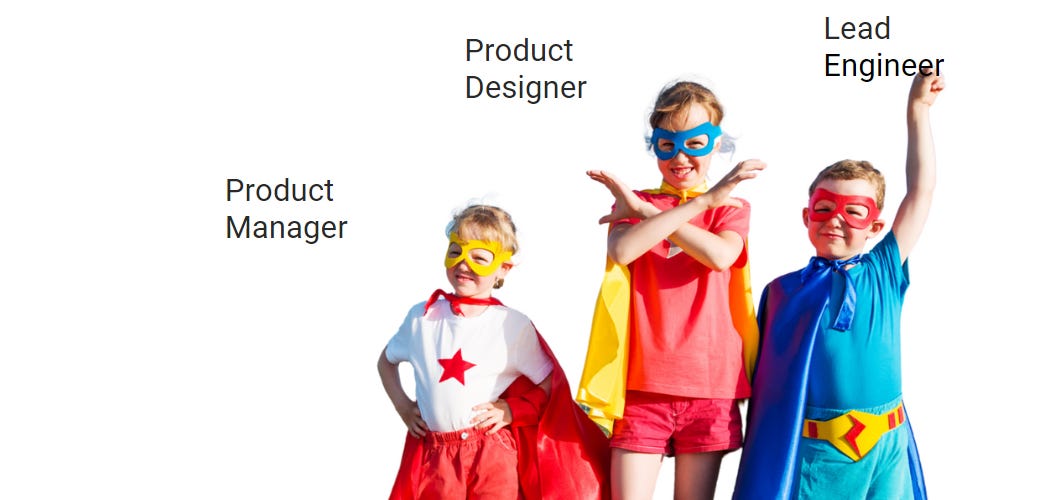
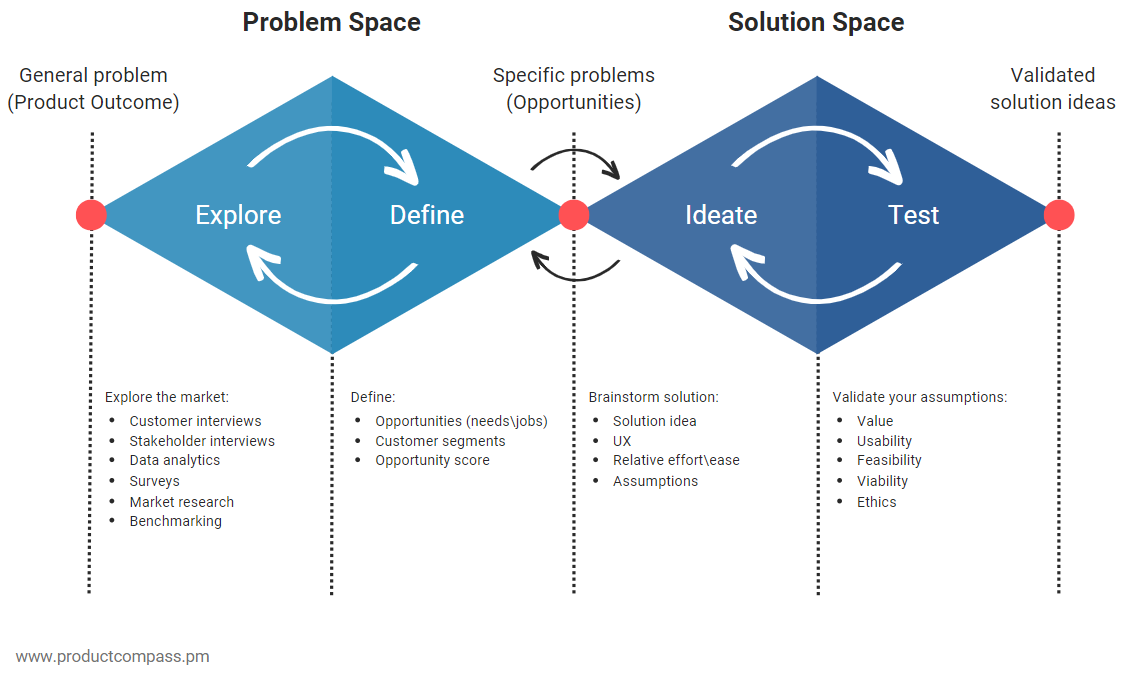
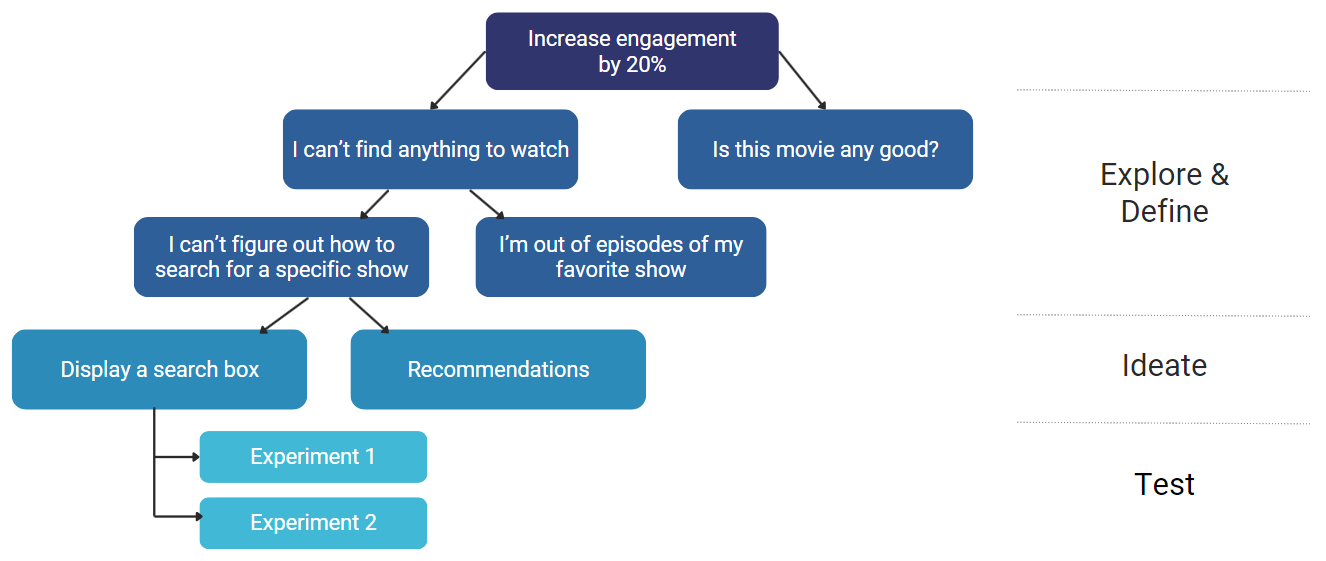
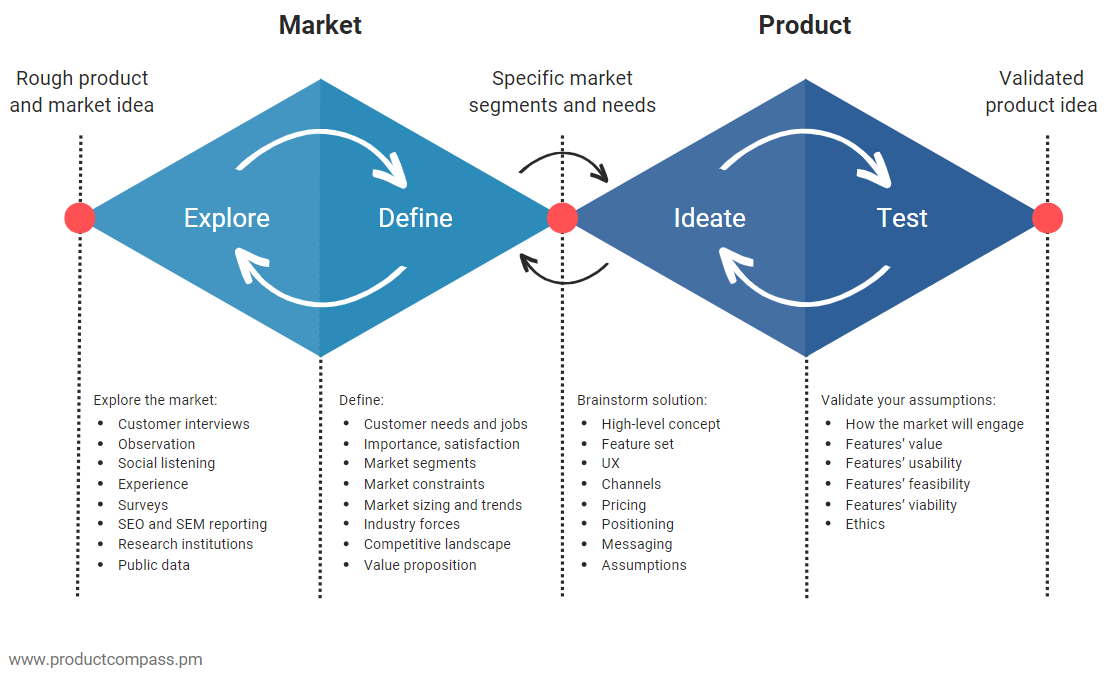
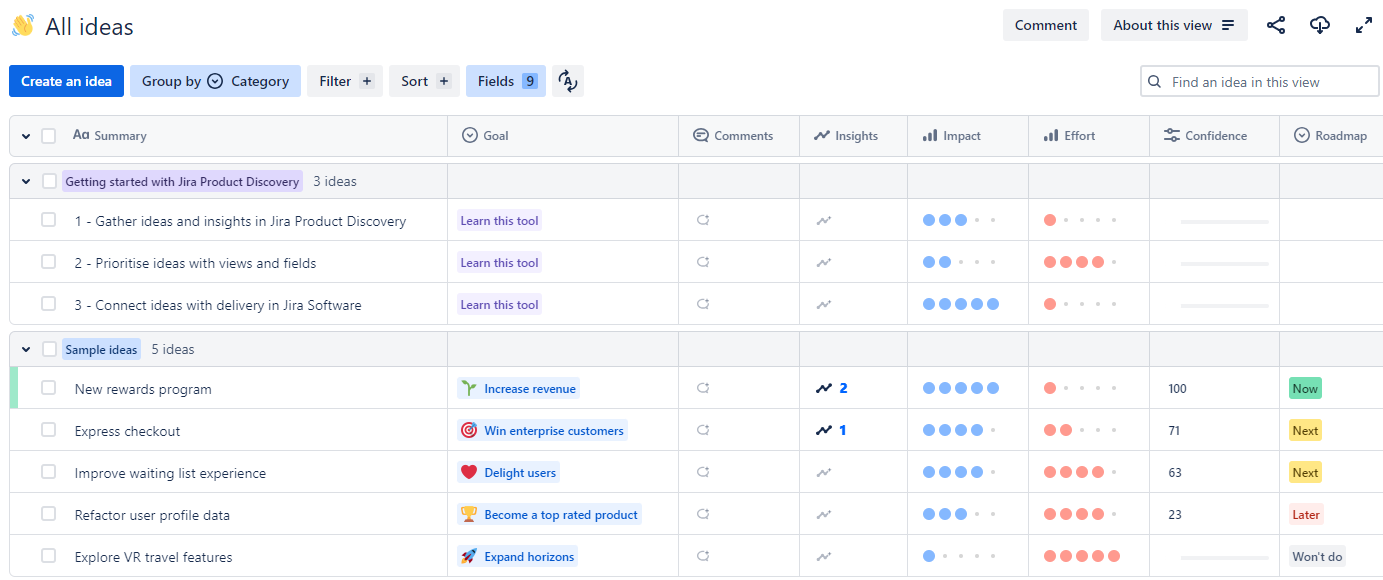
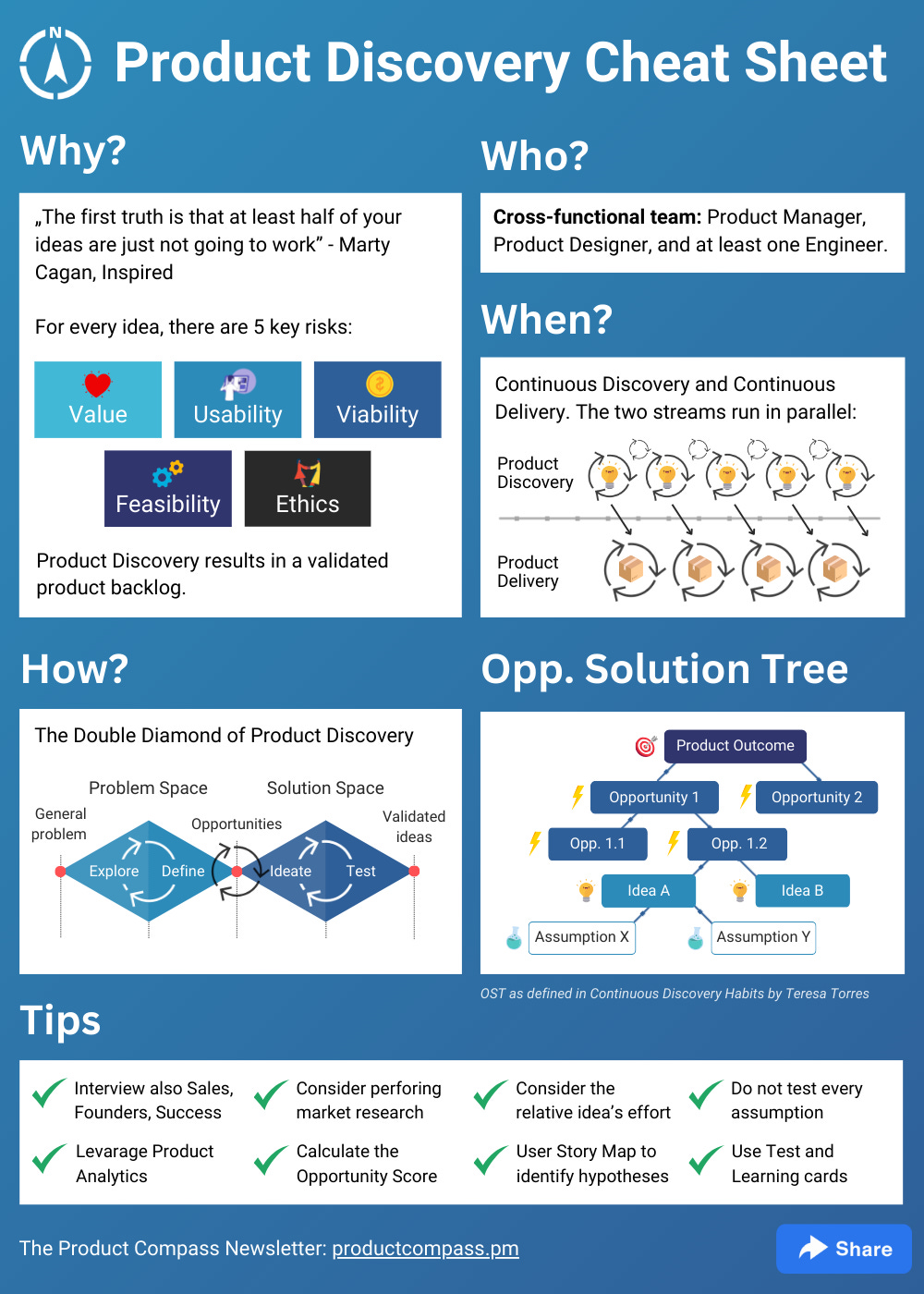
What would be the difference between an "opportunity" and a "problem?" Going off of Torres's definition of an opportunity as a customer need, pain point or desire, I'm having trouble seeing what would be added to the opportunity during the discover phase that would result in something different. In my mind, it feels like the "problem" would just be a re-wording of the "opportunity."
@Pawel
Thanks for the article! FYI, there is a small typo towards the end, "Product-Makret Fit"